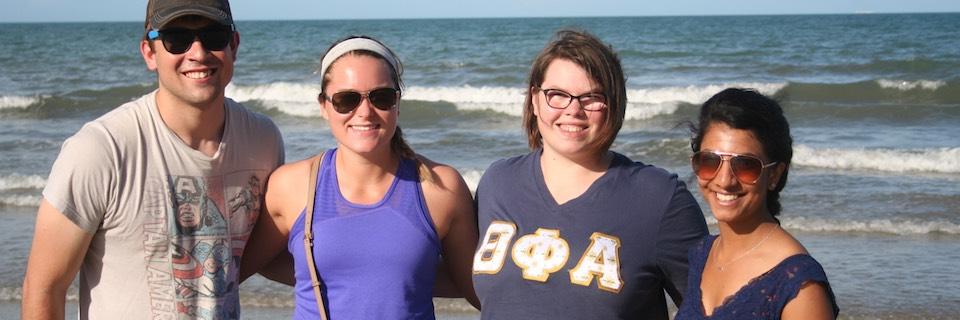Biology Field Trip Gives Students Up-Close Look at Life Down Under

Learning about ecosystems somewhere across the world can be done with textbooks and other academic materials. But it’s probably a lot more illuminating — not to mention a lot more fun — to experience it firsthand.
That’s the idea behind the annual Biology Field Trip, a semester-long course that culminates in a trip, either abroad or in the United States, that allows students to get a better understanding of the diversity of life on earth with a firsthand look.
This year, four students spent the spring semester with Chad Scholes, Ph.D., associate professor of biology, discussing the biological features of Australia before traveling the nearly 9,500 miles to the island continent for a two-week trip following commencement in May. There they deepened their understanding of the diverse ecosystems in both Australia and New Zealand. It was the first trip by the class there since 2011 — they alternate between trips in the U.S. and abroad, and rotate destinations. But Scholes said Australia makes for an exciting place for a learning trip like this.
“Because they’re an island and because it’s been isolated for so long, Australia’s biology is really unique,” Scholes said.
That includes the world’s largest living organism, the Great Barrier Reef, in addition to features such as the continent’s eucalyptus forests and the great number of marsupial species there as well as the Blue Mountains. Scholes said the students had the opportunity to see different environments in Cairns, Sydney and Auckland, New Zealand, and even to talk to some of the biologists who study these unparalleled ecosystems and their inhabitants.
“We spend the semester talking about what we’re going to see and what we expect to see,” Scholes said. “But it’s really different to see and experience all of that for yourself. I think the students come away from this with a whole new understanding.”







